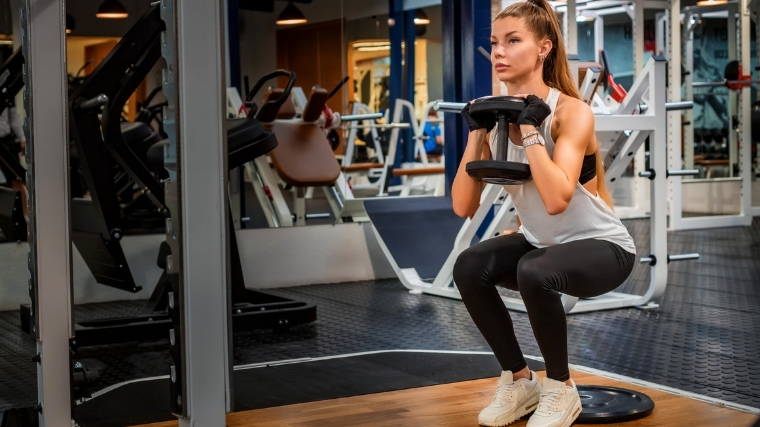Mastering the Heel Elevated Goblet Squat for Enhanced Strength and Balance
The heel elevated goblet squat is a versatile and effective exercise that targets multiple muscle groups, enhancing both strength and balance. This technique, which involves holding a kettlebell or dumbbell close to the chest while standing on elevated heels, offers a unique challenge to the lower body and core stability. By incorporating this exercise into your routine, you can significantly improve your functional fitness and overall athletic performance.

Benefits of the Heel Elevated Goblet Squat
The heel elevated goblet squat is renowned for its ability to engage the quadriceps, glutes, and hamstrings more effectively than traditional squats. According to a study published in the Journal of Strength and Conditioning Research, this variation can lead to a 20% increase in muscle activation in the quadriceps compared to standard squats. Additionally, the elevated heel position enhances ankle mobility and promotes better balance, making it an ideal exercise for individuals with limited ankle flexibility or those recovering from injuries.

Technique and Execution
To perform the heel elevated goblet squat correctly, start by selecting a kettlebell or dumbbell that allows you to maintain proper form throughout the movement. Hold the weight close to your chest with both hands, ensuring that your elbows are pointing downwards. Stand on a platform or raised surface that elevates your heels, and maintain a straight back with your chest up. Lower your body by bending at the knees and hips, keeping the weight close to your chest. Push through your heels to return to the starting position. Proper execution of this exercise not only maximizes its benefits but also minimizes the risk of injury.

Common Mistakes to Avoid
Despite its benefits, the heel elevated goblet squat can be challenging for beginners. Common mistakes include rounding the back, allowing the knees to cave inwards, and not lowering the body deeply enough. These errors can reduce the effectiveness of the exercise and increase the risk of injury. To avoid these pitfalls, focus on maintaining a neutral spine, keeping the knees aligned with the toes, and ensuring a full range of motion by squatting down until your thighs are parallel to the floor.

Integration into Your Workout Routine
Incorporating the heel elevated goblet squat into your workout routine can provide a fresh challenge to your lower body and core. It is recommended to start with lighter weights and gradually increase as you become more comfortable with the movement. This exercise can be performed as part of a warm-up routine to enhance mobility or as a standalone strength-building exercise. By varying the intensity and volume, you can continue to see progress and avoid plateaus in your training.

Expert Opinions and Testimonials
Many fitness experts and athletes advocate for the heel elevated goblet squat due to its comprehensive benefits. Celebrity trainer Jillian Michaels has praised this exercise for its ability to “strengthen the entire lower body while improving balance and coordination.” Similarly, renowned strength coach Charles Poliquin emphasized the importance of ankle mobility in performance, making the heel elevated goblet squat a key component in his training programs.
“The heel elevated goblet squat is a game-changer for anyone looking to enhance their lower body strength and balance,” says Jillian Michaels.
Conclusion
The heel elevated goblet squat is a powerful exercise that offers numerous benefits for strength, balance, and mobility. By mastering the technique and integrating it into your workout routine, you can achieve significant improvements in your functional fitness and overall athletic performance. Remember to focus on proper form, avoid common mistakes, and gradually increase the intensity to maximize the benefits of this versatile exercise.
